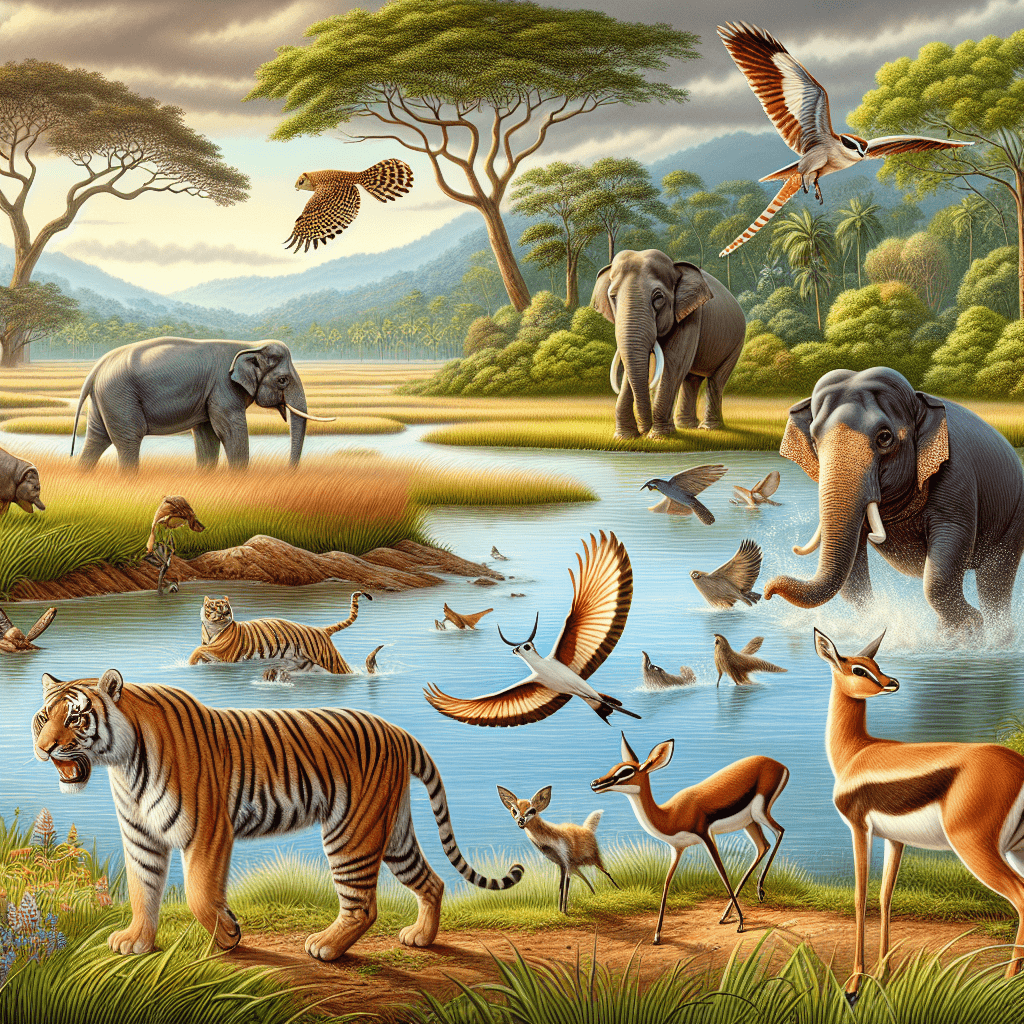Mammals are a diverse group of animals characterized by their ability to nurse their young with milk, have hair or fur, and possess specialized teeth. Studying mammals of India is of great importance due to the country’s rich biodiversity and the crucial role mammals play in maintaining ecological balance. India is home to a wide variety of mammal species, making it a fascinating subject for research and conservation efforts.
Taxonomy and Classification
Understanding the taxonomy and classification of mammals is essential for studying their evolutionary relationships and ecological roles. In India, several major mammalian orders can be found, including Carnivora, Artiodactyla, Primates, Rodentia, Chiroptera, Cetacea, Proboscidea, Perissodactyla, and Lagomorpha. Each order consists of different families, genera, and species, each with its own unique characteristics and adaptations. For example, Carnivora includes suborders Feliformia (Cats) and Caniformia (Dogs, bears, etc.), while Artiodactyla comprises even-toed ungulates like deer and antelope.
Endemic Mammals of India
Endemic species are those that are found exclusively in a particular geographic region. India is home to several endemic mammal species, which are of great significance for conservation efforts. Some examples include the lion-tailed macaque, a critically endangered primate found in the Western Ghats, and the Nilgiri tahr, an endangered mountain goat species found in the Nilgiri Hills. Other endemic mammals include the Kashmir stag, golden langur, hispid hare, and Andaman shrew. Protecting these unique species is crucial for preserving India’s biodiversity.
Threats to Mammals in India
Mammals of India face numerous threats to their survival. Habitat loss and fragmentation due to deforestation and urbanization are major concerns, as they disrupt the natural habitats and migration patterns of many species. Poaching and illegal wildlife trade also pose a significant threat, driven by the demand for animal parts and products. Climate change is another pressing issue, affecting mammal populations through altered food availability and habitat suitability. Human-wildlife conflict, particularly in areas where human populations and wildlife overlap, further exacerbates the challenges faced by mammals in India. Additionally, pollution and toxic substances can have detrimental effects on mammalian health and reproductive success.
Conservation Efforts
India has established numerous national parks and wildlife sanctuaries to protect its diverse mammal species. These protected areas serve as crucial habitats and breeding grounds for many endangered and threatened mammals. Several wildlife conservation organizations in India, such as Wildlife Trust of India and Wildlife Conservation Society-India, work tirelessly to conserve and restore mammal populations and their habitats. The government plays a vital role in mammal conservation through initiatives like Project Tiger and Project Elephant, which focus on the conservation of these iconic species. Additionally, community-based conservation projects engage local communities in conservation efforts, promoting sustainable practices and coexistence with wildlife.
Iconic Mammals of India
India is renowned for its iconic mammal species, which hold cultural and ecological significance. The Bengal Tiger, one of India’s most iconic animals, is a symbol of strength and beauty. The Indian Elephant, revered in Indian culture, plays a crucial role in maintaining forest ecosystems. The Indian Rhinoceros, found in the Kaziranga National Park, is a conservation success story. The elusive Snow Leopard, adapted to life in the high mountains, is a symbol of resilience. The Indian Lion, found in the Gir Forests of Gujarat, is a critically endangered species. The Indian Gaur, the largest wild cattle species, is a majestic presence in the forests of India.
Mammal Diversity in Different Regions of India
India’s diverse geography gives rise to a wide range of habitats, each supporting unique mammal species. The Western Ghats, a UNESCO World Heritage Site, harbor a high level of endemism, making it a hotspot for mammal diversity. The Eastern Himalayas, with its varied elevations and climatic zones, support a rich array of mammal species, including the elusive red panda. The Thar Desert, though arid, is home to several hardy mammal species adapted to desert conditions, such as the Indian gazelle. The Sundarbans, a mangrove forest in West Bengal, is famous for its Royal Bengal Tigers and Gangetic dolphins. The Central Indian forests, including Kanha and Bandhavgarh National Parks, are known for their tiger populations and diverse mammal communities.
Mammals and Indian Culture
Mammals of India have a significant presence in ancient Indian mythology and folklore, often depicted as symbols of power, wisdom, and divinity. They also inspire Indian art and literature, with various stories and poems featuring mammals as central characters. Traditional medicine in India also incorporates the use of certain mammal species, such as tiger bones and rhino horns, although such practices are now illegal due to conservation concerns. Understanding the cultural significance of mammals helps foster a deeper appreciation for their conservation.
Future Perspectives and Research
Continued research on Indian mammals is crucial for understanding their ecology, behavior, and conservation needs. Emerging technologies, such as DNA analysis and remote sensing, offer new avenues for studying mammals in a non-invasive and comprehensive manner. Collaborative efforts and international partnerships can further enhance research and conservation initiatives, enabling the exchange of knowledge and resources. By investing in research and conservation, India can ensure the long-term survival of its unique mammal species.
Conclusion
India’s mammal diversity is a testament to its rich natural heritage. Protecting and conserving these charismatic creatures is not only essential for their survival but also for the overall health and balance of ecosystems. By appreciating and safeguarding India’s mammals, we contribute to the preservation of the country’s biodiversity for future generations. Let us celebrate and protect the incredible mammals that call India home.

